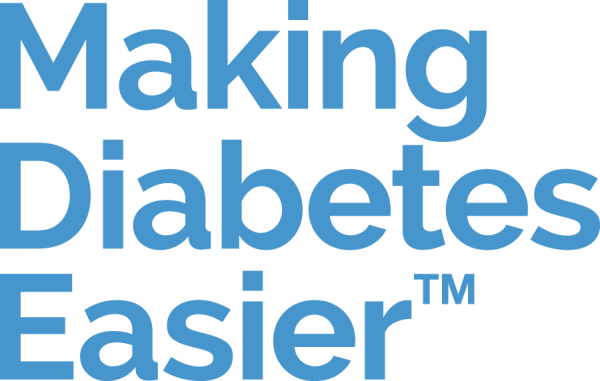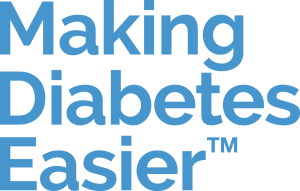What are the treatments of type 2 diabetes?

What are the treatments of type 2 diabetes?
Several solutions exist for the prevention and treatment of type 2 diabetes. Initial treatment consists of implementing a healthy diet combined with regular physical activity. If the changes in lifestyle are ineffective, antidiabetic drug therapy and insulin injections may be proposed [1].
Weight loss
Excess weight and obesity are recognized as primary risk factors for type 2 diabetes. They usually result from poor nutrition and prolonged physical inactivity [1,3]. For this reason, treatment of type 2 diabetes usually begins with making improvements to the patient's lifestyle [1,2,3].
To this end, the health care provider will recommend an adapted diet combined with a program of regular physical activity [1,2,3]. These lifestyle changes are aimed at losing weight and gaining control over the patient's glycaemia [1,2].
Weight loss goals are specific to each person and depend on their age and their state of health [1,2].
Dietary improvements

Dietary improvements
For successful treatment of type 2 diabetes, the patient's diet must be improved as soon as a positive diagnosis has been made, the overall goal being to adapt the food intake to each person’s individual needs, particularly their energy expenditure [1,2,3].
To prevent and treat type 2 diabetes, it is vital to reduce overall carbohydrate (sugar) intake and increase fiber [1,3]. Quantity apart, special attention must also be paid to the quality and sources of the carbohydrates [2]. Fruit and vegetables are recommended, along with whole-grain foods [1,3].
Patients should also reduce intake of animal protein, starch (potatoes, rice, corn...), and fatty foods; and reduce or even completely eliminate industrially-processed products containing simple sugars such as glucose and fructose (sweets, sodas, ready-made meals) [1,3].
A good place to start is with the Mediterranean or vegetarian style diets that are universally regarded as being healthy and are therefore highly recommended in the prevention and treatment of type 2 diabetes [3].
Sport and physical exercise

Sport and physical exercise
Regular physical activity is an essential factor in the successful treatment of type 2 diabetes and reduces the risk of developing the disease by about 30% [3].
Physical activity can be sport, but there are numerous other forms of exercise. Simply getting up and moving around instead of sitting for long periods of time is beneficial. Movement and exercising every day not only burn calories but also has a positive effect on insulin sensitivity and glycaemia [3].
How often should a person with type 2 diabetes exercise?
It is recommended that you exercise at least 30 minutes a day to see the benefits of physical activity on type 2 diabetes [3].
Antidiabetic medication
If the type 2 diabetes is too severe or if transitioning to a healthy lifestyle is not enough to significantly reduce blood glucose levels, oral diabetes medication may be recommended. Metformin is the recommended first-line medication for the treatment of type 2 diabetes, but there are many alternatives if side effects manifest themselves or it proves ineffective [1].
How does metformin work?
Along with lifestyle changes, metformine is the standard medication for treating type 2 diabetes [1].
The main benefits of this particular diabetes medicine are that it acts on insulin resistance, it doesn’t cause hypoglycemia and it reduces vascular complications brought on by diabetes [1].
Metformin also promotes weight loss, which is why it is especially recommended for overweight and obesity [1].
Potential side effects of metformin:
- Metformin may be poorly tolerated and cause some unwanted side effects, most commonly gastrointestinal disorders. Treatment should therefore start with relatively low prescribed doses [1].
- Metformin is contraindicated in cases with renal failure (filtration rate less than 60 ml/min) and severe liver disease [1].
Insulin
Insulin therapy may be proposed as treatment for type 2 diabetes to reduce the risk of vascular complications and gain better control of blood glucose [1].
Doses of insulin to be injected are calculated to suit each individual. It should help regulate blood glucose levels while preventing hypoglycemia and avoiding weight gain which is one of the consequences of too high a dosage [1].
Sources:
- Andreas F. H. Pfeiffer, Harald H. Klein. The Treatment of Type 2 Diabetes. Dtsch Arztebl Int. 2014 Jan; 111(5): 69–82.
- Bolla AM, Caretto A, Laurenzi A, Scavini M, Piemonti L. Low-Carb and Ketogenic Diets in Type 1 and Type 2 Diabetes. Nutrients 2019, 11(5), 962.
- Hubert Kolb, Stephan Martin. Environmental/lifestyle factors in the pathogenesis and prevention of type 2 diabetes. BMC Med. 2017; 15: 131.

